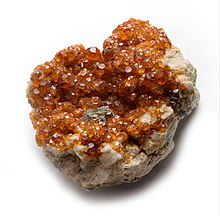Materials Samples
Lavender: Vegetable
Is a small aromatic
evergreen shrub of the mint family, with narrow leaves and bluish-purple
flowers. Lavender has been used for over
2,500 years. In ancient times lavender was used for mummification and perfume
by the Egyptians, Phoenicians, and peoples of Arabia. Romans used lavender oils
for bathing, cooking, and scenting the air. It is referenced in the bible many
times as a perfume or a tool of seduction, then it was known as spikenard. As
an herbal medicine, lavender is widely utilized for or soothing, relaxing
qualities. Today lavender is still used in aromatherapy, and cooking.
Onionskin: Vegetable
Is very fine translucent, almost
paper like material that covers the outer surface of an onion. Onionskin is
most commonly used in soups, salads, and casseroles. They can also be used provide an exceptionally rich source of plant
compounds called flavenoids,
especially the powerful antioxidant and anti-inflammatory compound, quercetin. Quercetin used for lowering LDL cholesterol and
blood pressure, fighting allergies, reducing inflammation, enhancing muscle
growth and function, treating depression, and some forms of cancer.
Feathers: Animal
Usually derived from all different kinds of birds, feathers grow from
a birds skin and are usually light, soft and sometime colorful. In the 14th
century feathers were used in bedding, only for the rich. By the 19th
feathers were more commonly used in bedding by all. Feathers were also used as
writing utensils, essential for written communication. Feathers were and are
used in different cultures as part of religious and spiritual practices and
symbolisms. Feathers have also been common used in fashion both in the past and
today. They are sometimes used to insolate coats and colorful adornments and
garments and accessories. Peacock feathers specifically were used on clothing
and materials to show high status in society.
Branches: Vegetable
Are the part of the tree that grows out from the trunk or from a
bough. Tree braches have had a wide range of uses throughout history. They have
been used as tepee skeletons, part of shelters. They have been used in basket
weaving, to create containers for carrying goods. Braches are used in
decoration and art pieces.
Salt: Mineral
Salt, also known as
table salt or rock salt, is a crystalline mineral that is composed primarily of
sodium chloride, a chemical compound belonging to the larger class of ionic
salts. Salt has been known to be up to 4,700 years ago. It is used for flavoring
and preserving food.
Shells: Animal
A Seashell is a hard,
protective outer layer created by animal that lives in the sea. Shells are part
of the body of the animal. They are often found, empty, washed up onto the
seashore. Shells have been used as currency, in many Indian Ocean and Pacific Ocean islands, also in North America,
Africa and the Caribbean. They have been used in everyday tools such as, bowls,
bath tubes, even baptismal fonts when big enough. They have also been used as
scrapers, blades and clasps because of their shape.
Lead: Mineral
Lead is a chemical element in the
carbon group with symbol Pb and atomic number 82. Lead is a soft and malleable
metal, which is regarded as a heavy metal and poor metal. Lead has been used by people for a wide variety of purposes,
for the past 5000 years. Water pipes that date back to the Roman Empire,
glazes on prehistoric ceramics, and the cosmetic kohl, used by ancient
Egyptians to darken their eyelids, are a few examples of ancient uses of lead.
Today, lead, which has been mined on all continents except Antarctica.Today,
the other significant uses of lead are in ammunition, oxides in glass and
ceramics, casting metals, and sheet lead.
Copper: Mineral
Is a ductile metal with very high
thermal and electrical conductivity. Pure copper is soft and malleable; a
freshly exposed surface has a reddish-orange color. Copper is the first metal
to be worked with by people. It has been used in coins, gun metals, electrical
equipment like wiring and motors.
Antlers: Animal
One of the branched
horns on the head of an adult (usually male) deer, which are made of bone and
are grown and cast off annually. Deer antlers are used in furniture, art,
trophies, and medicine.












































